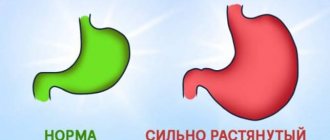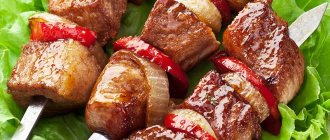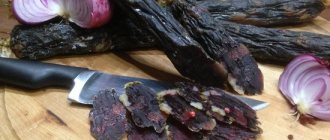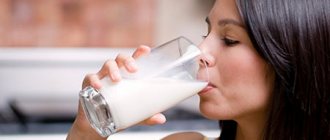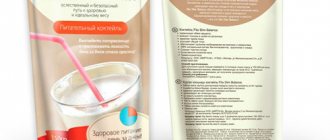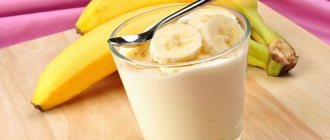There aren't many people who don't like processed cheese. It is often used to create original sandwiches that are so good in the morning. Firstly, it’s very tasty, and secondly, it doesn’t take any time at all: you brew coffee, spread cheese on the bread - and now a delicious and healthy breakfast is ready. This is an indispensable assistant when preparing other dishes, both hot and cold. In addition, the product is distinguished by some of its valuable properties that can benefit the body.
A little history
Where could such cheese appear? Well, of course, in Switzerland - rightfully considered one of the countries that founded the cheese business. It was invented back in 1911 by Swiss scientists Walter Gerber and Fritz Stettler, who worked in the defense industry. By this time, cheese fondue, which was made by melting hard cheese, was considered a traditional dish for conscripts in Switzerland. It was undoubtedly tasty, but it had one big drawback - the fondue very quickly became unusable. After conducting numerous studies, defense scientists told the world about melting salts. Their discovery made it possible to get rid of the staleness of melted cheese. And today, not a single processed cheese production can do without them.
Content:
- A little history
- Description and types of product
- Chemical composition and beneficial properties of processed cheese
- Production technology
- Use in cooking
- How to choose and store the product correctly
- Diet “Five processed cheese”
- Harmful properties of processed cheese
- conclusions
But processed cheese owes its rise to the masses to the Americans. Cheese merchant James Craft was not delighted with the product, which he nonetheless successfully traded. They say that he once uttered the phrase that it is not bad cheese that causes difficulties for sellers, but any cheese in general, because it is a bad product in principle. It needs to be stored under certain conditions, but it still tends to disappear quite quickly, besides leaving behind a lot of waste. In those days, merchants were required to cut off even a slightly weathered cut of cheese at the request of customers.
It is widely believed that it was Kraft who invented melting salts and was one of the first holders of a patent giving the rights to the production of processed cheese. This happened in 1916. However, some facts suggest the opposite.
The patent held by Kraft was entitled "Process for Sterilizing Cheese and Improving the Product Thus Produced." There was no mention of melting salts at all. Essentially, Kraft was melting down the cheese waste that had been bothering him so much and sealing it in jars, thus creating a kind of fast food prototype. And the melting salts necessary for the production of processed cheese were first mentioned in US patents ten years after they were discovered by the Swiss - in 1921.
During the First World War, Kraft managed to obtain an order to supply his cheese product to the American military, who were in France at that time. In the same France that has long been famous for its elite and delicious cheeses. And now, instead of the famous French cheeses, Americans were forced to eat canned cheese waste, even melted and sealed in jars. Kraft used the money raised from military supplies for a devastating advertising campaign, the effect of which was impressive: processed cheese overtook live cheeses in popularity. Every second resident of the country was ready to pay even more for them than for durum varieties. By the second half of the 20th century, processed cheese had captured 40% of the market for all cheese products. Of course, this could not but lead to indignation on the part of sellers of natural goods. The advertisement positioned this product as real cheese. They demanded that the new product be called differently, arguing that it was far from genuine. There were many options for names, but in the end we settled on the banal “processed cheese” - processed cheese.
Recommended Products
Let's look by brand to see what kind of cheese you can eat on a diet and proper nutrition:
✅Light cheese from . And also Edam from the same company does not contain harmful additives.
✅Cheese has a high fat content, but a few slices will not harm your figure.
✅ Cream cheese from “A Thousand Lakes” is also a little fatty, but in moderate quantities it will not harm.
✅ Fortunately, Edam cheese from Golden Europe will do. It has a high proportion of fat, but is quite safe for the body if consumed in moderation.
✅And Suluguni from Granabella will do. This product does not contain harmful additives.
Description and types of product
Processed cheese is a product made from rennet cheeses, cottage cheese, milk powder, butter and other dairy products. Various spices and herbs, special fillers and vegetable fats are often added to its composition. It is produced by melting at temperatures of about 90 degrees with mandatory additives in the form of melting salts, which help the cheese remain soft for a long time and not go stale. Every year you can see more and more different packaging with this product on supermarket shelves. It comes in boxes, plastic jars, and foil. There is both regular cream cheese and various variations: with bacon, mushrooms, ham, herbs and other additives.
In total, there are four types of processed cheese:
- pasty;
- slice;
- sweet;
- sausage.
Pasty cheese has a consistency similar to homemade sour cream. This species differs from others in its high fat and water content. It is plastic, easily recognizable by its delicate creamy taste and characteristic aroma. Often packaged in plastic containers. It is quite easy to spread on bread, use as a spread for sandwiches or to make sauces. The paste-like product can be found both in regular creamy form and with various additives in the form of spices and herbs.
Chunk cheese is much thicker than the previous type. It is easy enough to cut into slices or small pieces, hence its name. Its fat content can usually reach up to 70 percent. Most often it can be found in traditional foil packaging, familiar to most since childhood. This is exactly what the processed cheese “Druzhba” is familiar to all of us. Sliced cheeses can also be regular or with additives.
Sweet cheese absolutely lives up to its name. This is ordinary processed cheese, but with the addition of various flavorings and aromas. It is often used as a dessert. The most popular types of additives are:
- honey;
- cocoa;
- nuts;
- coffee;
- berries;
- syrups;
- chicory.
Most often it can be found in paste form, which makes it easy to use for both spreading and sauces.
Sausage cheese is considered the hardest of all four types. It contains the least fat and often contains additives in the form of cumin, pepper and herbs. This type is packaged in molds that give it the appearance of sausages. Sausage cheese is often smoked, which gives its taste a special piquancy and refined note.
Cheese diet for weight loss
A cheese diet will help you quickly lose weight. In a few days you can lose about three kilograms without harming your health. The main advantage of this protein diet is a very small amount of carbohydrates. The body begins to consume internal carbohydrate reserves, which reduces adipose tissue. You need to eat unsalted and hard types every day. Fat content should not exceed 12%. It is imperative to take multivitamins, since fruits and vegetables are excluded from the diet.
For 3 days
A special cheese diet for 3 days will allow you to lose 3 kilograms. You don’t have to be afraid to eat this product and cottage cheese, but be sure to drink more liquid. This is an effective method for rapid weight loss. Here is an example of a menu for three days:
- Breakfast: unsweetened tea, coffee, cheese.
- Second breakfast: boiled egg, tea.
- Lunch: 100 g cheese, 200 g meat (lean).
- Afternoon snack: 250 g of fresh cottage cheese.
- Dinner: low-fat kefir or yogurt.
- Breakfast: 1 bell pepper, cheese, herbal tea.
- Second breakfast: tea, boiled egg.
- Lunch: boiled meat with a slice of cheese, mineral water.
- Afternoon snack: 2 fresh cucumbers with cheese.
- Dinner: cheese, yogurt or kefir.
- Breakfast: 2 fresh tomatoes, low-fat cottage cheese (150 g).
- Second breakfast: 100 g of asparagus, low-fat cheese, mineral water. Lunch: boiled chicken breast, cheese (100 g), tea.
- Dinner: green apple, cheese slice.
For 10 days
The duration of the proposed diet is 10 days, and 10 kg of weight can be lost during this time. A cheese diet for 10 days suggests that you can eat 50-80 grams of this fermented milk product per day. What kind of cheese can you eat on a diet? Only solid and no more than 100 g per day. It is useful to combine different types of it, eating them with vegetables. Drink no more than a liter per day. After five days, take a break for a couple of days, but do not eat cereals, bread products, flour and sweet foods. Vegetables and meat optional. Then repeat the diet. A menu of simple components is offered:
- Breakfast: 20 g of cheese, a glass of milk, cucumber (fresh).
- Lunch: 4 tomatoes, cilantro (2 sprigs), 20 g cheese.
- Afternoon snack: cucumber, 20 g cheese.
- Dinner: 100 gr. boiled meat (turkey, chicken).
- Breakfast: 2 boiled potatoes with salt, 30 g of cheese.
- Lunch: 5 radishes, 100 g cabbage.
- Afternoon snack: 20 gr. cheese, a glass of milk.
- Dinner: 4 boiled carrots, 20 g cheese.
- Breakfast: 150 gr. boiled peas with salt, a cup of unsweetened strong black tea.
- Lunch: 200 g boiled asparagus, 30 g fermented milk product.
- Afternoon snack: 2 cucumbers, 20 g cheese
- Dinner: 100 g boiled beans with salt, 15 g cheese.
- Breakfast: 20 g of cheese, a glass of milk, 2 bell peppers.
- Lunch: 100 g boiled broccoli (salted).
- Afternoon snack: 6 lettuce leaves, 40 g cheese.
- Dinner: 100 g of boiled red meat.
- Breakfast: a glass of kefir, 2 tomatoes, 20 g of cheese,
- Lunch: 200 g eggplant stewed with garlic, 20 g cheese.
- Afternoon snack: 2 cucumbers, 40 g cheese.
- Dinner: 100 g of boiled white chicken meat, 50 g of celery root.
Chemical composition and beneficial properties of processed cheese
The energy value of processed cheese is approximately 260 kcal. It contains about 24 grams of protein and 13.5 grams of fat. It also contains cholesterol, saturated fatty acids, organic acids, starch, ash and water.
This product also contains a wonderful vitamin complex, as well as a useful mineral composition. Vitamins include B vitamins, especially pyridoxine, folic acid and cobalamins, vitamins A and , as well as vitamin D, which is essential for the body’s functioning.
The mineral complex is primarily represented by phosphorus, calcium and sodium. It also contains useful minerals such as sulfur, chlorine, potassium, and magnesium. And microelements:
- zinc;
- copper;
- iron;
- manganese.
Thanks to this composition, processed cheese can be almost completely absorbed by the body. It contains high-quality milk protein casein, which contains amino acids necessary for the stable and harmonious functioning of the body. You can also highlight its other useful properties:
- the vitamins and minerals included in its composition help improve vision, strengthen hair and nails, improve skin and complexion;
- has lower cholesterol content than durum varieties;
- significantly saturates the body, charges with energy and vigor;
- has a beneficial effect on the condition of bones, muscle tissue, and improves the condition of teeth.
Is it possible to eat Adyghe cheese on a diet? Diet on Adyghe cheese
Cheese is one of the main products of a healthy diet that promotes longevity. Is it possible to eat cheese on a diet? It is possible and necessary. And there are even special cheese diets.
With the help of this healthy and tasty delicacy, you can quickly get into shape in a short time. The main thing is to choose the right type of cheese.
The Adyghe cheese diet is a low-carbohydrate cheese diet that ensures that you maintain a balance of fats and proteins during each meal.
It is quite effective (in ten days you can lose from 5 to 7 kilograms).
This diet is especially useful for spring vitamin deficiency, because cheese contains calcium, phosphorus, magnesium, vitamins A and D.
The beneficial components of cheese are necessary for skin elasticity, beautiful hair and strengthening teeth enamel. During such a diet, the body will be enriched with protein, which is well and quickly absorbed by the body.
Description of the diet
The principle of the Adyghe cheese diet is that the human body receives carbohydrates, proteins and fats from food. When there are not enough carbohydrates in the diet, it is forced to consume subcutaneous fat (a reserve source) to obtain energy.
The basis of the diet in the cheese diet is cheese from Adygea with a low fat content (no more than 10-20%).
During a diet with cheese, it is very important to maintain a drinking regime. It is necessary to drink plenty of clean water (at least two liters per day).
The cheese diet is designed for a short-term period, and it can be repeated only after two to three months.
Diet menu with Adyghe cheese
The classic version of the diet with Adyghe cheese involves five or six meals a day.
First day
During your first breakfast, you should drink a cup of black coffee or green tea without sugar.
During the second breakfast, you can eat a small piece of Adyghe cheese and one boiled egg.
For lunch, boil 200 grams of lean meat.
Two hours after lunch you can eat about one hundred grams of lean cheese.
For an afternoon snack, eat no more than 250 grams of cottage cheese without adding cream, sugar or sour cream.
For dinner, drink a cup of low-fat yogurt.
Second day
On the second day, during breakfast, eat 50 grams of cheese, one sweet pepper, and drink a herbal decoction.
During second breakfast, eat a boiled egg and drink a cup of tea.
For lunch, boil 200 grams of rabbit meat, eat 50 grams of cheese, drink a glass of mineral water.
For an afternoon snack you can eat 50 grams of cheese and two cucumbers.
For dinner, eat 100 grams of cheese and drink a glass of kefir.
The third day
On the third day of the Adyghe cheese diet, for breakfast, eat no more than 150 grams of low-fat cottage cheese, two small tomatoes, and drink a cup of tea.
During the second breakfast, eat 50 grams of cheese with 100 grams of asparagus, drink a glass of mineral water.
For lunch you can eat one hundred grams of cheese, 100 grams of boiled chicken breast, and drink a cup of tea.
For dinner, eat 50 grams of cheese, one green apple, and drink a glass of low-fat yogurt.
You should stick to this diet for no more than five to seven days. You need to exit the cheese diet slowly. Gradually add vegetables and fruits, durum wheat pasta, and a small amount of bread to your food.
Contraindications to the cheese diet
A diet with Adyghe cheese is contraindicated in case of lactose allergy, hypertension, atherosclerosis, angina pectoris, kidney disease, metabolic disorders, constipation.
Cheese contains a large amount of milk fats and a small amount of carbohydrates necessary for physical and mental activity.
Production technology
The traditional preparation technology involves the production of processed cheese by pasteurizing a mixture of cheese products, milk, butter, and additives in the form of melting salts at a temperature of 75 to 95 degrees. This process allows you to preserve valuable and beneficial substances contained in products, as well as destroy harmful microorganisms. After this treatment, the cheese becomes viscous and viscous, homogeneous and can be stored for a long time.
A little later, another technology saw the light - UHT, in which the process takes place at a high temperature, about 140 degrees. Thanks to this, the product is completely sterilized and completely devoid of any microorganisms.
These products can only be differentiated by their shelf life. The sterile product can be stored for more than a year, while regular cheese has a shelf life of up to six months.
Use in cooking
You can make all kinds of sandwiches, toasts, and sandwiches with melted cheese. It is often used to create delicious sauces and gravies. Used for preparing both first and second courses. Wonderful soups and cream soups are prepared with the addition of this product. It is also a component of chopped chicken cutlets, dishes with mushrooms, and various salads. It can often be found as part of pizza. Sweet cheese can be used as an independent dessert, or it can be added to other confectionery products to give them a certain taste and thickness. This cheese with chocolate additives is especially popular. It is also good in combination with white wine and nuts.
Homemade processed cheese
A good tasty and high-quality product can be prepared without any problems at home if you have the necessary ingredients on hand:
- milk – 1 liter;
- chicken egg - 2 pieces;
- cottage cheese – 1 kilogram;
- butter – 100 grams;
- baking soda – 1 teaspoon;
- salt – 1 tablespoon.
Pour milk into a saucepan and almost bring to a boil. Add cottage cheese there, mix thoroughly and wait for the curdling process. This will take approximately five minutes. All this time the mixture must be stirred. As soon as the cottage cheese has curled, you need to take it out and wrap it in several layers of gauze. It would be good to hang such a package so that the whey drains better.
While this is happening, you need to heat the oil in a frying pan, add salt, soda and beat in the eggs. If desired, you can add various spices or herbs here: dill, turmeric, pepper, thyme, parsley, nuts. Place the strained cottage cheese in a frying pan and simmer for about 15 minutes, stirring frequently so that it does not stick.
Soon you will notice how it thickens, gradually forming a viscous mass. As soon as it begins to lag behind the walls, the product must be removed from the heat. It is recommended to place the resulting cheese in a container and cover with a lid to avoid the appearance of unnecessary film on top of the product. After cooling, place it in the refrigerator for about 5 hours.
Diet processed cheese
Dietary processed cheese is easy to prepare at home. To prepare this product you need:
- 1.5 liters of water,
- 1 tsp soda and the same amount of salt,
- 4 tbsp. refined sunflower oil,
- 1 kg of cottage cheese.
Homemade diet cheese is quite tasty and is a nutritious product. It can be easily cut, which is important when preparing sandwiches and all kinds of salads.
You need to start cooking with water, which needs to be boiled, and then put frozen cottage cheese in it. The heat must be reduced to a minimum, and the cottage cheese should be kept in this water for about 15 minutes. The cottage cheese must be squeezed out well using gauze or a special cloth. It is then placed in a processor and crushed. The remaining ingredients are added to the crushed cottage cheese: sunflower oil, salt and soda. Everything is heated using a water bath. Heating is carried out with constant stirring until the mass reaches the desired consistency. This will take approximately 15 minutes. Give the mixture the desired shape and cool.
How to choose and store the product correctly
In order to choose a better quality product, it is important to follow fairly simple rules:
- the name of the product must have the wording “processed cheese” and no other;
- the product should not contain flavorings or dyes, only milk components and melting salts;
- the product must comply with GOST;
- the product packaging must be intact and undamaged;
- When choosing plastic packaging, you should only take the one with the stamp “PP”, but not “PS”, which means that it is made of harmful polystyrene.
If the cheese has already been purchased, its quality can be checked by the following criteria:
- good cheese should have a uniform consistency of a pleasant creamy shade;
- it should not stick to the knife and be empty inside;
- real cheese does not have a pronounced taste and smell, their presence indicates the content of synthetic flavors in its composition, or the spoilage of the product;
- the appearance of mold on the surface of the cheese indicates damage to the product.
The shelf life of processed cheese varies from two to six months. It should be stored in the refrigerator, at a temperature no higher than 4 degrees. When storing it, it should be wrapped in parchment or plastic film, since when opened it dries and is able to absorb various odors.
It is better not to use foil for storing it.
Advantages and disadvantages
Fitness nutrition is a complex science that reveals the undeniable advantages of cheese in the diet. Benefits of cheese:
- If you do not neglect physical activity, cheese will help your muscles quickly recover after a workout.
- Low-calorie cheese slows down the process of carbohydrate absorption. Due to this, weight loss occurs faster.
- Proper nutrition, which includes cheese, helps keep the body beautiful and fit, due to... Phosphorus, in turn, helps the kidneys function and remove waste products. Calcium strengthens bones.
Cheese in fitness nutrition has its drawbacks, for example, problems with the digestive tract and constipation are possible. Also, cheese is not recommended for people who have.
Diet “Five processed cheese”
This cheese is also suitable for weight loss. The diet with its use is balanced, but the portion size is quite small, that is, there will always be a slight feeling of hunger. If you really want to eat, it is recommended to drink water. The course is designed for five days, the result of which will be a weight loss of almost 3 kg. This diet is suitable for quickly getting into shape on the eve of an event.
Sample menu for the day:
- breakfast (10.00) – unsweetened black coffee, processed cheese;
- lunch (12.00) – tomato with egg and herbs;
- lunch (14.00) – apple;
- afternoon snack (16.00) – 200 grams of low-fat cottage cheese, cucumber or sweet pepper, greens;
- dinner (20.00) – a glass of dry white wine.
An important condition for such a diet is to eat food exactly two hours apart, and wine is allowed to be consumed four hours after the last meal. This diet should be followed for all five days; the amount of food cannot be changed. During the entire diet, increased drinking is recommended, which should consist mainly of still mineral water.
Before trying the “5 Processed Cheese” diet, you should consult a doctor or nutritionist.
Is it possible to eat cheese for dinner? The right dinner, or what to eat in the evening to lose weight?
No meal is surrounded by as many myths and stereotypes as dinner. The principles of healthy eating refute them. There is no need to suffer from hunger, prohibiting yourself from eating after 18-00, giving nutritious and tasty dishes to the enemy, or limiting yourself to a glass of “zero” fat kefir. Dinner can and should help with weight loss - it’s just a matter of proper organization.
Skipping meals for a long time (from afternoon snack to morning) disrupts metabolism, harms the gastric mucosa, interferes with the building of muscle tissue and metabolic processes that the body “starts” at night. Without eating dinner, a person has difficulty falling asleep in the evening, and healthy, full sleep is the key to effective weight loss. In the morning you feel a loss of strength, it’s hard to wake up and get up. This does not give carte blanche to overeating in the evening and exceeding the daily calorie intake. Dinner for weight loss - meals eaten on time, rich in nutrients, which will not cause heaviness and will not interfere with weight loss.
Rules for evening meals for weight loss:
- have dinner three hours before bedtime (plus or minus 15 minutes) so that food is absorbed and you don’t feel hungry before bed. Therefore, the “before six” rule will only work if you go to bed at 21-00;
- dinner accounts for 20-25% of the daily calorie intake - if you lose weight with a diet of 1200-1600 kcal, it will be up to 400 kcal;
- if the daily calorie intake has been met during the day, it is allowed to supplement a light dinner with kefir with herbs or bran, natural yogurt half an hour to an hour before bedtime;
- you should not skip an evening meal - irregular dinners are fraught with gastrointestinal diseases, a “plateau” when losing weight, a person will become irritable and nervous;
- dinner must include foods rich in protein and fiber (about 100 g and 150 g, respectively), with a minimum of carbohydrates and foods with a high glycemic index;
- you need to concentrate on food, chewing food thoroughly and putting away gadgets to avoid the risk of uncontrolled overeating;
- dinner should be accompanied by a sufficient amount of liquid - water, pure or with lemon, green or herbal tea (many doctors do not recommend freshly squeezed juices; it is better to eat a whole fruit or vegetable);
- If you overeat (an evening trip to a cafe, a hard day at work), you should not skip breakfast the next day - additional training or jogging will help get rid of the calories received.
Harmful properties of processed cheese
This is a very high-calorie product, so it is not recommended for people who are prone to obesity or are overweight. It is not advisable to use it for diseases of the gastrointestinal tract, problems of the digestive system, as well as for renal failure. This product should also not be used by children, pregnant women and nursing mothers. The high sodium content in cheese can lead to an increase in blood pressure, so people prone to hypertension should not get carried away with it. It is also contraindicated in case of an allergy to the dairy products contained in it and in case of individual intolerance to the components included in its composition.
What a low calorie cheese. List of low-fat cheeses
Having received the answer to the question whether it is possible to eat low-fat varieties of cheese while on a diet, it is worth learning more about the types of such fermented milk products. These include:
- Tofu is a low-calorie cheese made from soy milk. Fat content 1.5-4%, contains 73 kcal/100 g. Refers to curd cheese, has a consistency similar to feta cheese. Contains a lot of protein and calcium, which helps prevent osteoporosis and strengthen the bone skeleton.
- Grain cottage cheese with 5% fat content and 105 kcal per 100 g. Often used in diets, used for making salads, prepared with the addition of salted cream. In English-speaking European countries it is known as cottage cheese.
- Gaudette is a low-fat cheese (7%), semi-hard, calorie content - 199 kcal/100 g. It has a mild taste with piquant notes, and contains a large amount of calcium.
- Chechil, fat content 5-10%, calorie content 253-313 kcal/100 g. The consistency is similar to suluguni, sold in the form of bundles of fibrous threads, contains a lot of salt.
- Ricotta (fat content 13%, 49 kcal/100 g). The lowest calorie cheese. Made from whey, it contains a minimal amount of sodium, many vitamins, minerals and methionine (a sulfur-containing amino acid), which is beneficial for the liver.
- Mozzarella (22.5% fat, 149-240 kcal per 100 g). It is produced on the basis of skim milk and is sold in the form of balls in packages with a salty solution.
- Feta (fat content 24%, 290 kcal/100 g). This Greek cheese is considered by many to be high in calories, but it is also produced in a lighter version. It is prepared from natural sheep's milk, and low-calorie - from goat's milk. Contains beta-carotene, vitamins (A, D, E, K, B), potassium, iron, magnesium, manganese, calcium, sodium, and many useful living organisms. Useful for gastrointestinal disorders.
- Oltermani (fat content 16-17%, 270 kcal/100 g). It has a dense, uniform texture with uniform holes over the entire surface, and has a delicate milky flavor.
- Fitness Viola Polar (5-10% fat, 250 kcal/100 g). One of the most popular for those who are on a diet. Some varieties contain yogurt instead of fat, which makes the product even more beneficial for health and weight loss.
- Adygei (14% fat, 240 kcal/100 g). An ideal option for a hearty breakfast on a diet, it contains no carbohydrates at all. It has a delicate consistency, sour milk taste, and is produced by fermenting cow's milk with bacteria.
